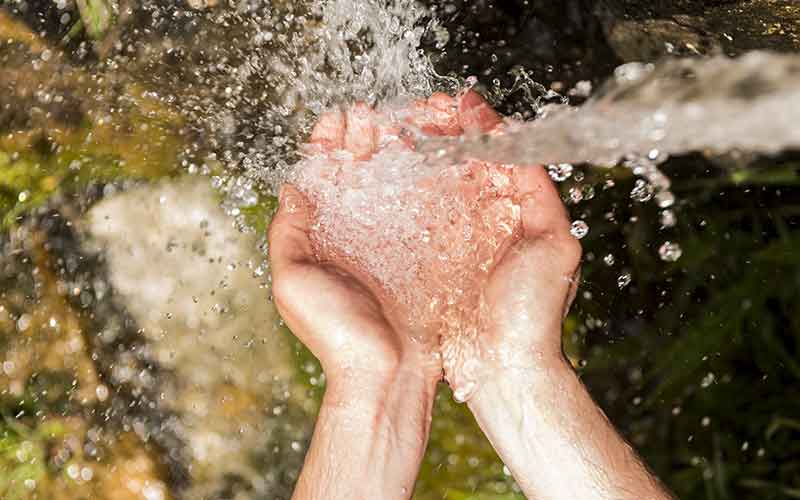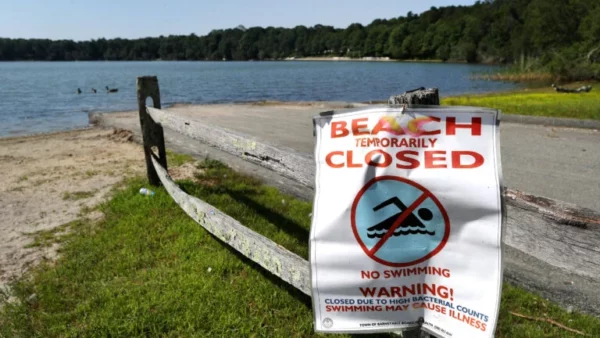
Toxic chemicals are putting New Hampshire's drinking water – and health – at risk. Photo: Crazymedia via Shutterstock
As we have written previously, New Englanders can no longer take for granted the safety of our drinking water. Rather, the problem of “PFAS” pollution threatens drinking water in many communities throughout the region. Unfortunately, New Hampshire is no exception. PFAS – per- and polyfluorinated alkyl substances – are toxic chemicals that have been found in public water supplies, private wells, and groundwater in a number of cities and towns here in the Granite State, warranting serious action by regulators to protect the public’s health.
The serious risks caused by these chemicals are well known, but federal regulators have failed to take meaningful action to protect the public from them. For that reason, CLF and our partners are calling on state leaders across New England to step in to protect our waters – and our health – from these dangerous poisons.
Your help will be critical in holding state leaders to account on this critical issue. Be sure you’re signed up for our email alerts so you’ll know the best time to make your voice heard.
Toxic Chemicals Pose a Growing Problem
PFAS are a public health “perfect storm.” They are extremely persistent in the environment and our bloodstreams, highly mobile in water, and toxic in very small amounts.
They also are pervasive. First developed in the 1950s, today, PFAS can be found in everyday products ranging from nonstick cookware to water-repellent clothing to stain-resistant fabrics and carpets. They have been used in some firefighting foams, resulting in contamination of sites such as the former Pease Air Force base. What’s more, manufacturing processes can cause PFAS to be emitted into the air, as in the case of the Saint-Gobain’s Performance Plastics facility in Merrimack.
PFAS are toxic to humans in very small concentrations with a wide range of health threats. They are suspected to cause cancer and have been linked to growth, learning, and behavioral problems in infants and children. They also can cause problems with fertility and pregnancy; compromise immune systems; and interfere with natural hormones and with liver, thyroid, and pancreatic function. Developing fetuses and newborn babies are particularly sensitive to some PFAS.
Two types of these toxic chemicals – perfluorooctanoic acid, or PFOA, and perfluorooctanesulfonic acid, or PFOS – have been phased out as a result of the dangers they pose to human health and the environment. Because of their persistent properties, however, they will remain a threat to water resources for decades to come.
Moreover, and particularly troubling, manufacturers have replaced the phased-out chemicals with new ones, many of which haven’t been adequately tested for their impacts on humans. In fact, approximately 3,000 or more different types of PFAS are in use today – threatening the health and safety of our water and the people who drink it.
PFAS Threaten New Hampshire Waters
PFAS pollution is a major issue in New Hampshire and, in recent years, has been the subject of significant, ongoing investigation. In 2014, PFOA and PFOS were found at Pease Tradeport, forcing the City of Portsmouth to shut down a public drinking water well. Air emissions of PFAS from the Saint-Gobain’s facility in Merrimack also have led to significant water pollution, including the contamination of private and public drinking water resources.
Other communities that have documented PFAS pollution in wells include Dover, Rochester, and Hampton. In addition to drinking water, PFAS have been found in surface waters – such as Berry Brook near the Coakley Landfill and brooks near the Pease Tradeport. They also have been detected in groundwater. One need look no further than the New Hampshire Department of Environmental Services’ PFAS Sampling Map to grasp the scope of the problem.
Setting Drinking Water Standards – You Can Help!
Despite the significant health risks associated with PFAS, the Environmental Protection Agency (EPA) has failed to show the necessary leadership to protect the health of our drinking water. While having developed a health guidance standard for two PFAS (PFOA and PFOS), it has not yet established standards under the Safe Drinking Water Act – standards that would ensure the safety of public water supplies.
In the absence of federal action, New Hampshire has begun to take some steps to protect residents on its own. Last year, the legislature passed a law requiring the state Department of Environmental Services to develop drinking water and groundwater standards for four types of PFAS: PFOA, PFOS, PFNH, and PFHxS.
On January 2, the Department published its proposed standards for drinking water – called Maximum Contaminant Levels – for each of these chemicals. Unfortunately, the proposed limits are less protective than standards adopted elsewhere, such as in Vermont and New Jersey. In short, these proposed standards fail to fully protect public health here in New Hampshire. They have generated serious questions from health advocates, including pediatrician and state Senator Tom Sherman, and a dose of skepticism from the Portsmouth Herald.
Fortunately, these initially proposed standards are just the beginning of a process that will include the opportunity for public input, as well as the Department’s further consideration of the science surrounding these four chemicals. We’ll be part of that process – pushing for the adoption of truly protective standards – and we urge you to do the same.
If you’d like to be alerted when you can make your voice heard by attending a hearing or sending in a public comment, be sure that you’re signed up for our email list. Your voice will be critical in ensuring the final standards are strong and protective.
A New Approach – Protecting the Public from the PFAS Class of Chemicals
It’s essential to establish drinking water standards for these four most common PFAS chemicals. But, as discussed above, there are more than 3,000 PFAS chemicals today – and more are being created. Regulators cannot reasonably expect to regulate PFAS on a chemical-by-chemical basis.
That’s why, in December, CLF, joined by Merrimack Citizens for Clean Water, New Hampshire Safe Water Alliance, Testing for Pease, and Toxics Action Center, petitioned the state Department of Environmental Services to develop an approach for safeguarding our water from the entire PFAS class. Using this approach, the Department would determine effective treatment techniques to protect the public from these chemicals and then require such treatment be used when there is a public health threat. CLF is urging this same approach in every New England state.
As of this week, the Department has rejected our petition, signaling that the State may be looking to EPA to solve the problem, which begs the question – who will step up and lead to protect the public’s health in the Granite State?
[widget id=”clf_cta_widget-3″]




